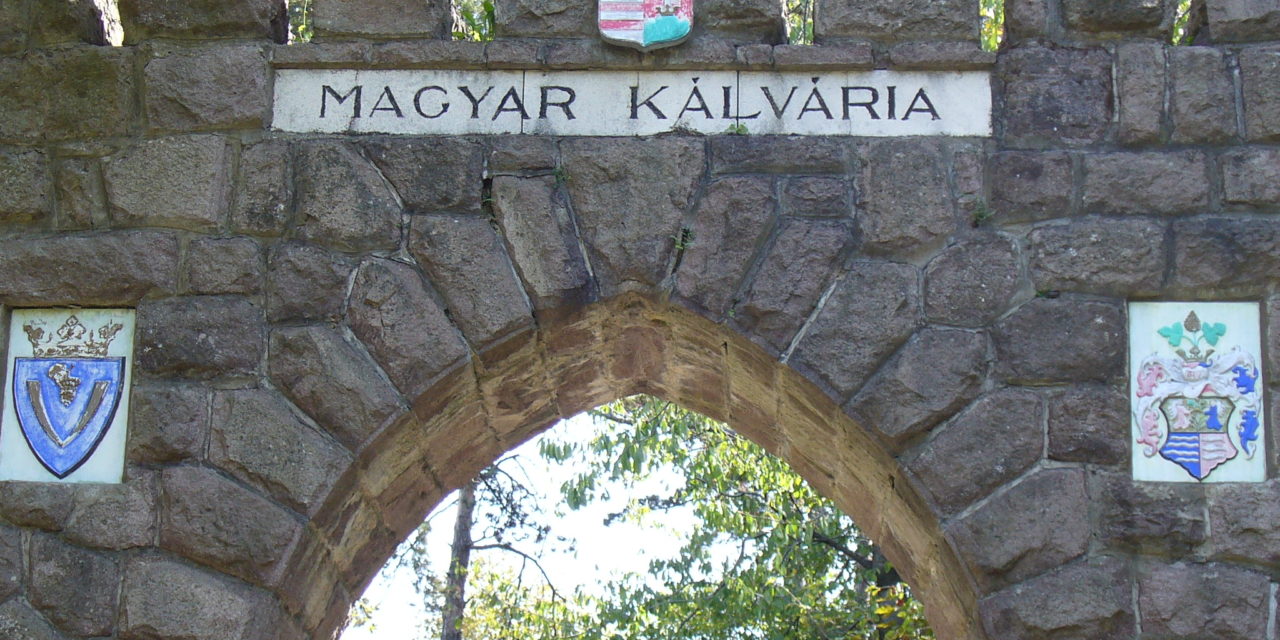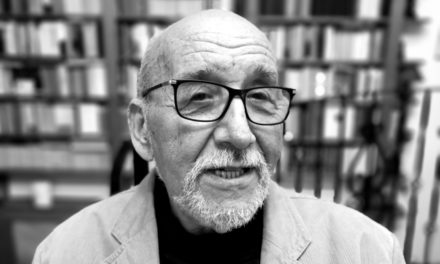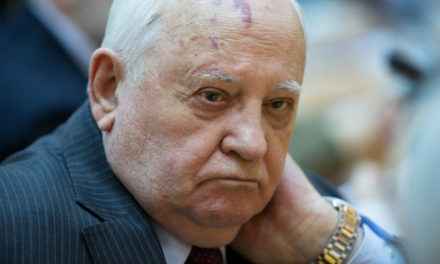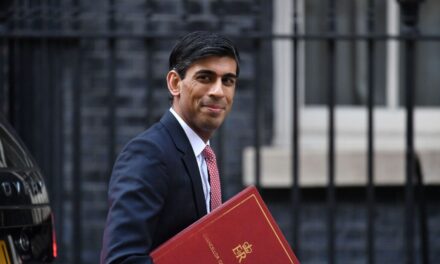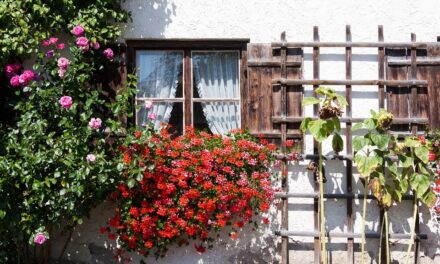"A nation that does not know its past does not understand its present, and cannot create its future!"
The Hungarian Calvary has a double meaning in this particular chapter. On the one hand, we are thinking of the stations located in Sátoraljaújhely, on Szár-hegy. This is the only calvary in Hungary that does not show us the stations of Jesus Christ's Way of the Cross, but the Hungarian tragedy of Trianon, the lost cities and parts of the country of the dismembered Kingdom of Hungary. Along the more than two-kilometer long road surrounded by wonderful natural beauties, in addition to the built heritage, the magical Zemplén landscape unfolds before us.

On the other hand, this Calvary represents one thousand one hundred years of Hungarian history. After all, from 895, from the moment that Árpád 's people founded a country in the Carpathian basin, our people were - and as we can see - exposed to continuous attacks. Historical eras are about constant nation-building and never-ending defense, which then led to Trianon. According to the original interpretation of the word calvary, it means "series of sufferings", which is the translation of the Latin calvaria /skull/ and the Aramaic Golgotha into Hungarian. The "Mountain of Skulls" is the site of Jesus' sufferings in Jerusalem. We are not making a significant reevaluation if we draw a parallel between the sufferings of Jesus and the suffering history of the Hungarians. Just think of the pyramids erected from the skulls of thousands of Hungarian warriors, which Sultan Sülejmán Nagy erected in the name of Islam after his victorious battles. In 1936, on the initiative of a Piarist teacher, Bódog Szepesi , the first section of the calvary was built on the Szár hill in Sátoraljaújhely.

In commemoration of Trianon's 100th anniversary, many material and intellectual works were published. Among them is a book that ignores the tragedy of the city, the pain of its inhabitants that has been alive for a century. In his work, the historian proves that this Calvary is nothing more than a false story of "the ballad of navigable streams". The well-known story goes that the Czechs made the decision-makers in Paris believe that the Ronyva is a navigable river, so the border should be marked there. In fact, the named stream is a small stream, which even a child can walk across from one bank to the other in summer. However, the author "pulls the lid off" the false legend when he writes in his book that the whole story was invented by the irredent Hungarians ten years after the Trianon decision. This "evidence", i.e. the mention of the navigable river, was actually not mentioned in the negotiations.
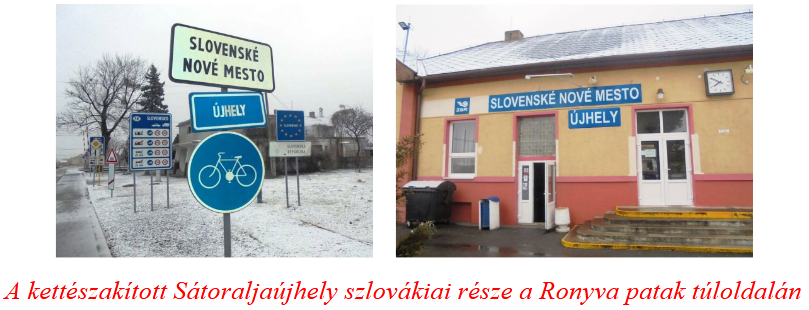
In the heat of justice, the author kicks the local patriots and all Hungarians who still feel pain because of Trianon. Because the navigable river may be a legend, but the fact is that the part of Sátoraljaújhely beyond Ronyván is still called Slovenské Nové Mesto. The legend destroyer does not mention that the village of Borsi, located three kilometers from the city, Ferenc Rákóczi's birthplace, was also annexed from Hungary.

For decades, the birthplace of the Great Prince was only seen in a state of neglect. The political attitude of the new masters of the Highlands and Subcarpathians, or to put it more bluntly, their hatred of Hungarians, doomed the national shrine that is so important to us. Some of the Hungarian intelligentsia in the motherland, such as the legend destroyers, did not try to improve this hopeless situation either.
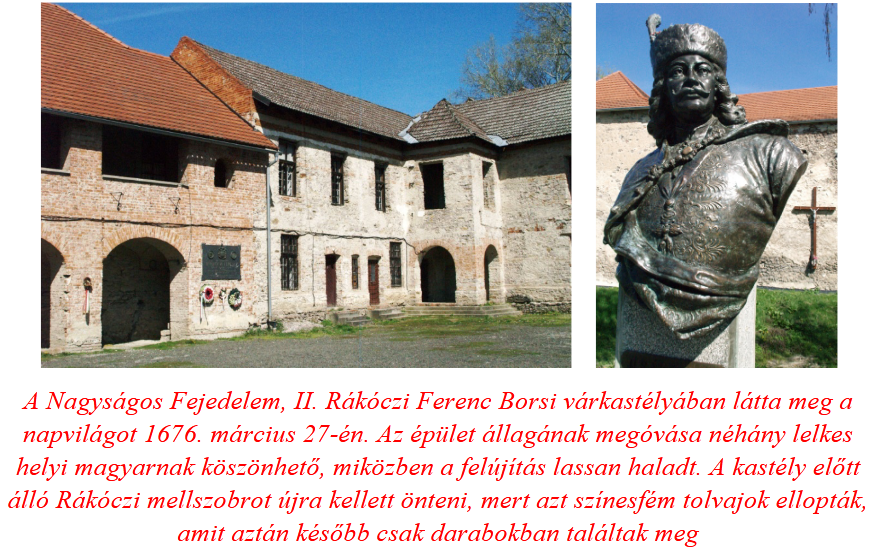
This is how it happened, "thanks" to this sad Hungarian disunity, that the robbers could continue to rob. Staying only in this area of a few square kilometers, we can see that the recolored Hungarian coat of arms in Slovak garb blooms on the official buildings of every settlement. We may be surprised to find that now the brand name Tokaj wine is not only the property of the mother country, but there is also a Slovak wine with that name.
Continuing along the winding path of the Hungarian Calvary, we arrive at the Centenary Turul inaugurated on June 4, 2020, which was realized based on the plans and ideas of Patrónus Foundation and Gábor Szajkó praises the work of the famous sculptor Péter Matl

Let's linger a little longer on the works of Péter Matl and mention Ilona Zrínyi and the little Ferenc Rákóczi . We should also know that the Monument of National Unity stands in Ópusztaszer, which, like his other works, proclaims the strength and vitality of Hungarians.
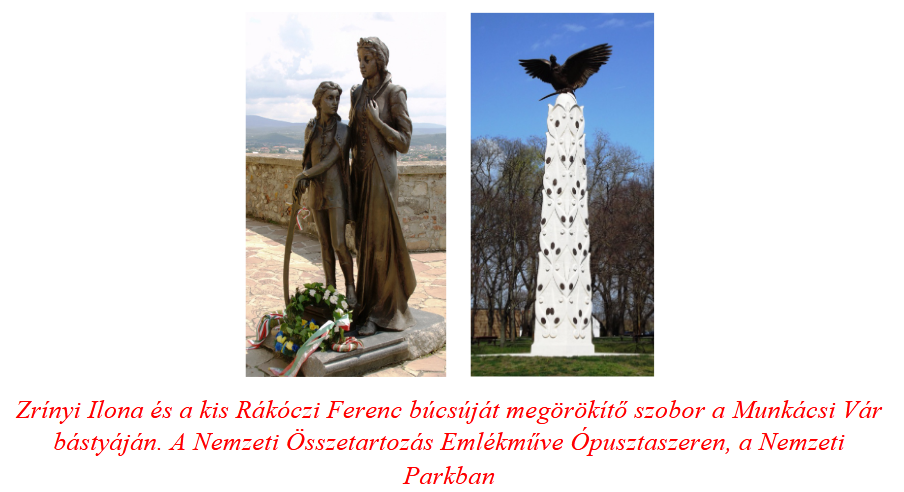
It seems that the previously mentioned historian's bad taste adjectives are still relevant today. When he classifies the creation of the Magyar Kalvária in the "revisionist canon", he further proclaims that the "irredenta Horthy system" wanted to memorialize a legend, a false myth. Fortunately, the legends live on, and the monument complex, which was destroyed during socialism, was renovated again in 1990 by these local patriots of Šátoraljaújhely, only with public donations. By now, Calvary Road has been illuminated at night, giving the stations more and more prestige and, hopefully, more visitors. The stone buildings that encompass 38 cities and resemble bastions lead to the top to the Saint Stephen's Chapel.
 During our journey, we come to the 100th National Flag, handed over in 1934, with the inscription on it, which tells the Hungarians of the highlands that "We will not forget!". It is widely known that the Relic National Flag, inaugurated in 1928, stood on Budapest's Szabadság Square, on the site of the Soviet monument that still stands there. The movement - as it later became - was initiated by Nándor Urmánczy , under whose leadership the first irredenta /meaning: unredeemed, to be recovered/ monument was inaugurated. (This word and concept expressing a completely innocent and legitimate national feeling was almost made a curse word after the Second World War.) Plans to restore the Relic National Flag were already prepared in 2001, but the city administration at the time prevented all attempts.
During our journey, we come to the 100th National Flag, handed over in 1934, with the inscription on it, which tells the Hungarians of the highlands that "We will not forget!". It is widely known that the Relic National Flag, inaugurated in 1928, stood on Budapest's Szabadság Square, on the site of the Soviet monument that still stands there. The movement - as it later became - was initiated by Nándor Urmánczy , under whose leadership the first irredenta /meaning: unredeemed, to be recovered/ monument was inaugurated. (This word and concept expressing a completely innocent and legitimate national feeling was almost made a curse word after the Second World War.) Plans to restore the Relic National Flag were already prepared in 2001, but the city administration at the time prevented all attempts.
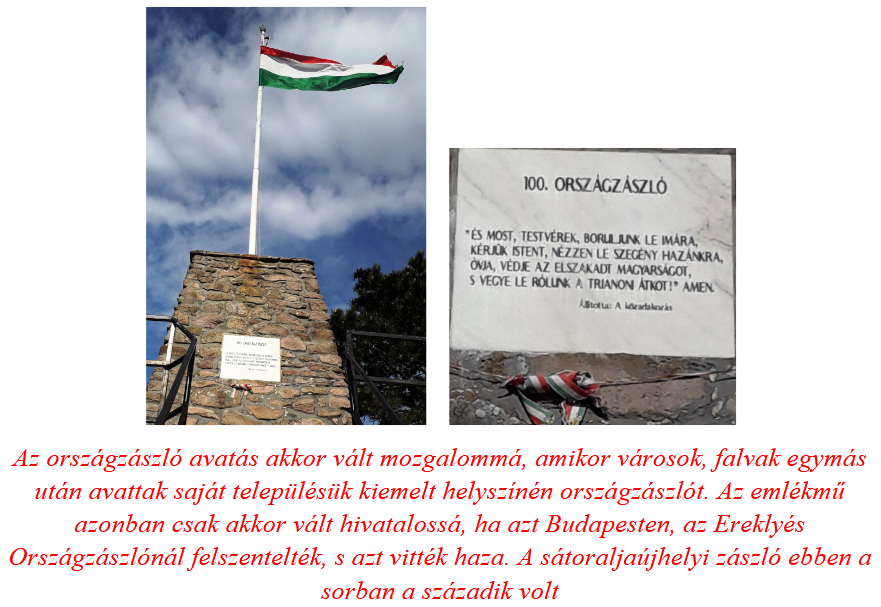
The 4-meter-high bastion gates of Kálvária are located in such a way that, according to their inscriptions and coats of arms, they symbolically surround the Carpathian Basin. Among the station's monuments, it depicts the first Cashier. After that, the person walking Calvary is guided through the outstanding places of Szepesség. The next stops are the once rich mining towns in the highlands, followed by Komárom and Bratislava. The road turns south from here and leads to Fiume, touching Kismarton and Csáktornya. The next stop is Transylvania, the most important cities of which appear with their coats of arms and quotes appropriate to each settlement. The road returns to the Highlands, touching the historically important cities of Transcarpathia.
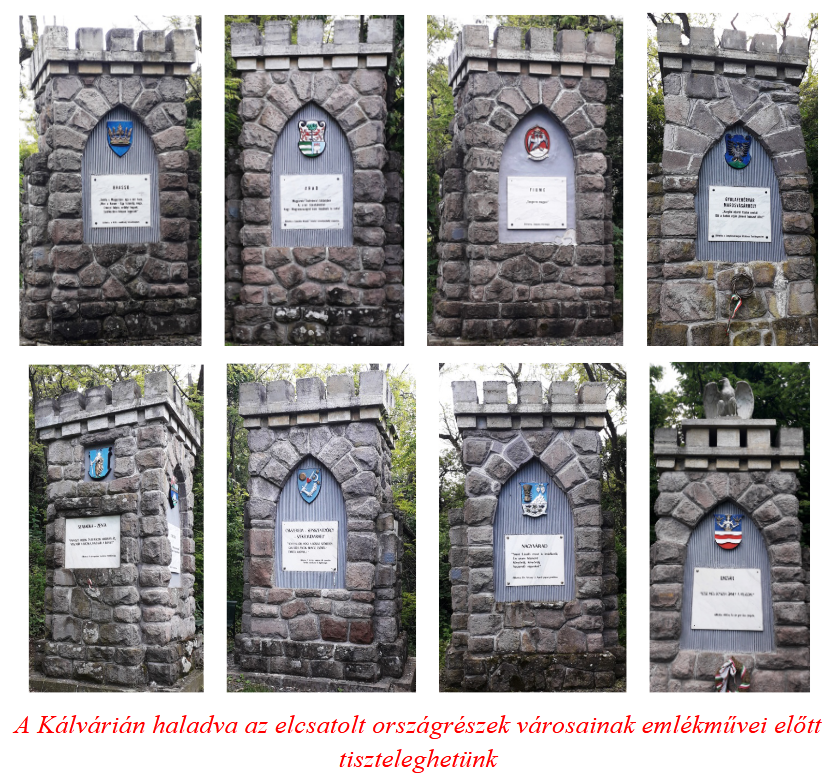
When we go through the bastions of Calvary, we reach the final destination, the chapel of St. István. The monument was erected on the Szár mountain plateau in 1938, on the occasion of the Holy Year, in honor of the 900th anniversary of the death of King St. István. The monument in the "field of forest devotion" decently closes the pilgrimage route.
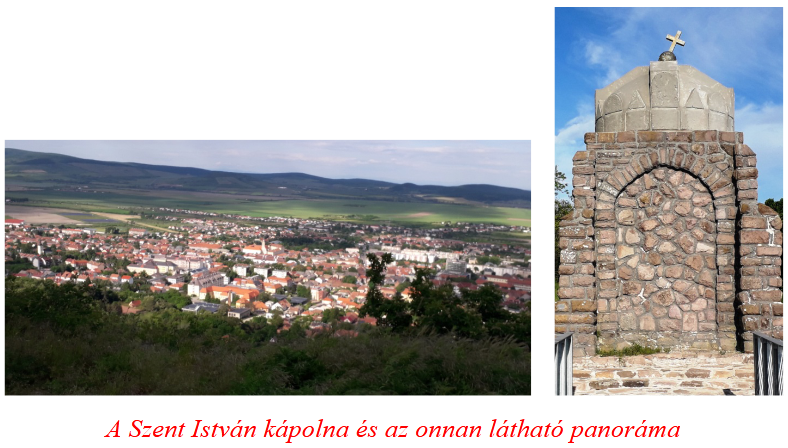
On the altarpiece of the chapel, Saint Stephen offers the Holy Crown to the patron of Hungary, the Blessed Virgin. The relief placed on both sides of the altar depicts Saint László and Saint Elizabeth.
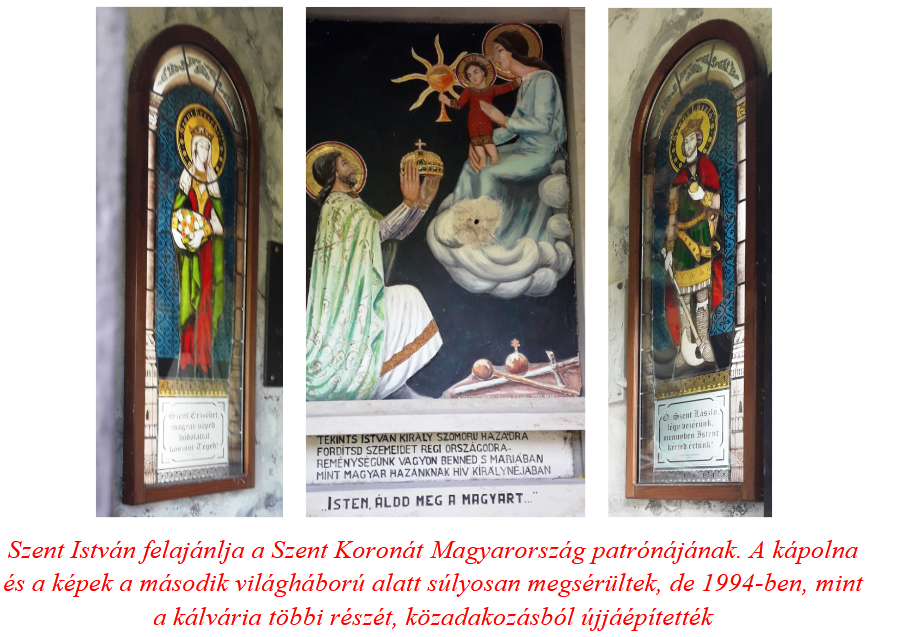
The city and its surroundings, divided by the Trianon border (not only the city of Komárom was affected by the unjust Paris decision), await visitors with unparalleled historical, literary, church and natural value. On one of the tent hills - and this applies only to the mountains that closely hug the city - you can discover the lookout point, the already discussed Calvary on the other, and the Castle Hill on the third. The natives of this Zemplén and Abaúj landscape include II. Ferenc Rákóczi , Lajos Kossuth and Ferenc Kazinczy . Gáspár Károli translated the Bible into Hungarian – in Gönc and Vizsoly – and Zsuzsanna Lorántffy .

The grapes used to make Királyok wine, the king of wines, the world-famous Tokaj wine, grow here. The most beautifully situated castles of the Carpathian basin can be found here, which can be visited in II. We can meet the memories of Ferenc Rákóczi. Such are the fortifications of Sárospatak, Boldogkőváralja, Füzér, Regéc, and Szerencs, which list notable historical events. Aba Sámuel's "city" later, Abaújvár, the small settlement on the edge of the border, with only 250 souls today.
Zemplén and Abaúj are Hungarian Pilgrimage Places, every Hungarian must visit here! (We can't forget about Borsod, but he deserves a separate chapter.)

The parts published so far can be read here: 1., 2., 3., 4.
Author: Ferenc Bánhegyi

